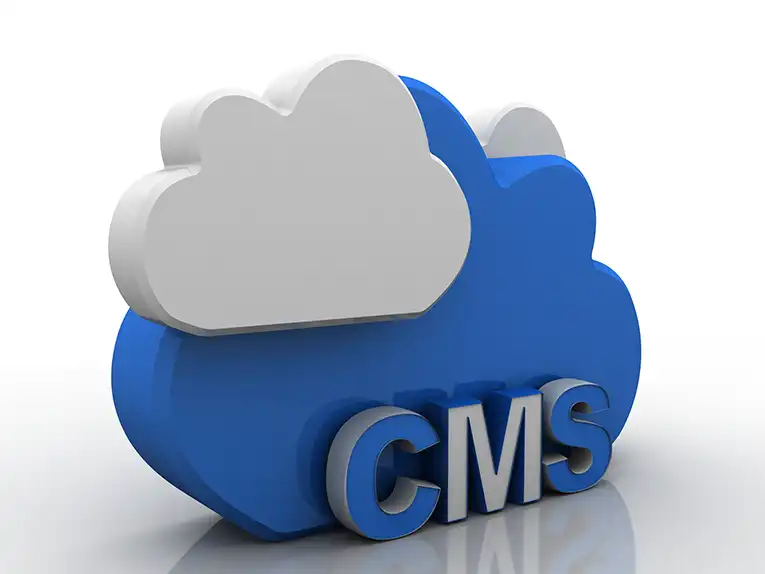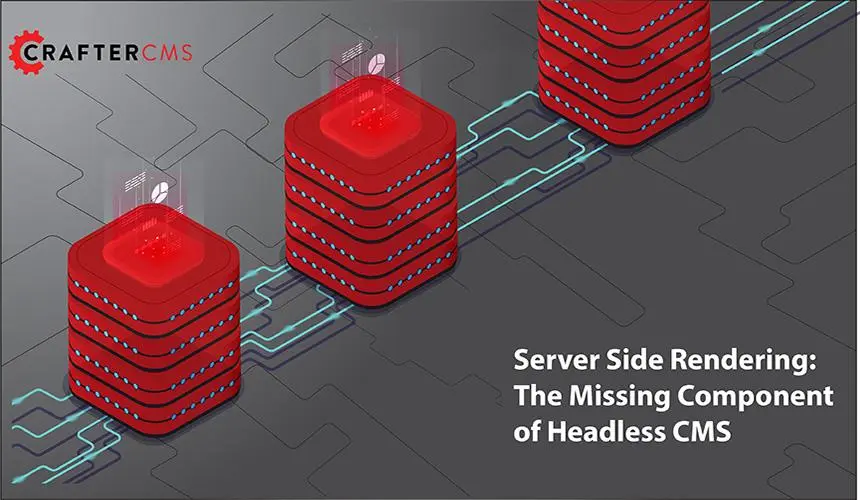Java CMS: Everything You Need to Know

Sara Williams

First launched in 1995, Java continues to be the de-facto standard programming language for major enterprises. According to the 2023 State of Java in the Enterprise Report, 70% of enterprises are investing in new full-stack Java applications, and 57% want to modernize existing Java apps.
With so much excitement surrounding Java, enterprises will likely seek a Java-based CMS that enables them to leverage the proven enterprise-grade capabilities of the platform as they build digital experiences.
We’ll explain everything you need to know about Java CMSs, including choosing between proprietary and open source options, the benefits of a Java-based platform, and capabilities to consider in a Java CMS.
What Is a Java CMS?
A Java CMS or Java-based CMS is a content management system built on Java that leverages multiple Java libraries and tools. For large enterprises, in particular, a Java CMS offers the ability to create and manage different types of content experiences and familiarity with one of the most popular enterprise programming languages.
To provide the high-quality backend software that powers these CMSs, Java-based platforms often rely on frameworks like Spring. The Spring Framework provides excellent application infrastructure support. As a result, IT teams can concentrate on implementing business logic as the architecture takes care of the structure. Moreover, it’s not dependent on a specific deployment environment. For example, Java-based CMSs will run on Linux or Windows, AWS or Azure or Google Cloud or dedicated infrastructure.
Why Choose a CMS Built on Java Architecture
Many legacy CMSs were built using PHP, and others today leverage .NET architecture. However, there are some good reasons businesses should choose a CMS built on Java architecture ahead of all others.
Platform Independence
Java is compatible with any server that can run a Java Virtual Machine (JVM). As such, developers who want to run a Java CMS on any cloud platform can choose to deploy it on Windows or Linux machines or other enterprise infrastructure.
Enterprise Compatibility & Support
Java remains a popular choice among enterprises, so many companies will likely already be leveraging some Java-based software. Using a CMS built on Java also means that developers will not only be familiar with the language but there will be compatibility with the tools they are already using.
Ease of Use
The Java programming language is renowned for its exceptional ease of use, making it a preferred choice for developers across a spectrum of applications. Its syntax is designed to be clear, concise, and easily comprehensible, facilitating a streamlined development process. With a robust set of libraries and a straightforward object-oriented structure, Java empowers developers to write efficient and maintainable code.
Performance
Java is well-known for empowering high-performance applications across diverse computing environments. For example, Java's Just-In-Time (JIT) compilation enhances performance by translating bytecode into native machine code at runtime, optimizing execution speed. Java's extensive standard libraries, multithreading capabilities, and efficient memory management contribute to its robust performance, making it well-suited for developing high-traffic websites and other content-centric digital experiences.
Security
The JVM acts as a secure execution environment by isolating Java applications from the host system. Java implements a strict access control mechanism through its built-in security manager, which governs the actions that an application can perform, preventing unauthorized access to system resources. The language also incorporates automatic memory management, reducing the risk of common security vulnerabilities such as buffer overflows. Furthermore, Java's support for cryptography, digital signatures, and secure communication protocols enhances its capabilities in safeguarding sensitive data. Regular updates and patches from the Java community contribute to addressing emerging security threat
Spring & Micro Frontend Support
As one of Java’s essential libraries, Spring offers infrastructure support for many applications. With Spring supplying the architecture, IT teams can focus on implementing business logic without being limited to a specified deployment environment.
Additionally, modern Java ecosystem developers can leverage Spring Boot to deploy applications more easily as microservices grow in popularity. However, when building microservices, UI issues can sometimes crop up. The flexibility of Java allows them to create micro frontends to break the user interface into small, independent modular components to solve the UI challenges.
Open Source vs Proprietary
Java-based CMSs provide different features, pricing options, and degrees of scalability, depending on whether the business chooses to use an open-source or proprietary, closed-source platform.
Proprietary Java CMS
A proprietary or closed-source Java CMS is built and maintained by the organization and is not available for review or modification by external developers. This closed-source infrastructure is often preferred by organizations that require a high degree of security but does come with some drawbacks, including a higher total cost of ownership.
Open Source Java CMS
An open-source Java CMS is a content management system with a backend written in Java and licensed under an OSI-approved license such as GNU, Apache, or MIT. The best advantage of open-source CMS is that the software is developed and maintained by an active community of developers, providing the freedom for anyone to use it and modify the source code.
Unlike closed-source Java CMSs, open-source Java CMSs have no license fees or usage restrictions. Optionally, many open-source CMSs are backed by one or more vendors who offer commercial support and cloud-managed services, providing all the benefits of a proprietary CMS with all the flexibility of open source.
Benefits of an Open Source Java CMS
The benefits of Java are further enhanced by opting for an open-source Java CMS instead of a proprietary one.
Transparent
The inherent openness of an open-source Java CMS derives its advantages from a transparent development, testing, and release cycle facilitated by actively engaged programmers. Through the public sharing of code and its exposure to community scrutiny, a continuous refinement process takes place.
Consequently, modifications to the code are perpetually available for review and commentary, while the authorization and check-in processes remain under the control of the project maintainer(s), ensuring the incorporation of the highest-quality code. In contrast, the assessment of quality becomes challenging in the context of a closed-source Java CMS.
Avoid Vendor Lock-in
In the case of a closed-source CMS, any alterations, upgrades, or fixes become the sole responsibility of the organization, subject to its internal priorities. Relying on a proprietary system implies dependence on a single organization, irrespective of its stability.
The adoption of open-source software acts as a safeguard against vendor lock-in, as it allows the exportation of sites, applications, content, data, and configurations at any given time. Furthermore, the option to fork the source code is also available.
Security
Java's robust security profile, attributed in part to the Java Virtual Machine (JVM) and reinforced by the deployment of resilient enterprise applications on Java infrastructure, contributes to maintaining a high level of security. Additionally, the transparent nature of open-source software enhances its likelihood of being secure, given the visibility into the source code.
Large Developer Community
Another essential benefit of open source is the large developer community contributing to growing the product updates. The developer community helps substantially in testing new releases and promoting and maintaining the quality standards of the CMS. Beyond this, they also usually contribute features, fixes, and add-ons to the CMS platform.
Compare: Open Source Java CMS vs Proprietary Java CMS
|
Open Source Java CMS |
Proprietary Java CMS |
|
|
Licensing and Cost |
Free with no licensing fees involved. |
Requires license purchase, often accompanied by additional fees for support and updates. |
|
Source Code Access |
Openly accessible source code, enabling users to customize and contribute accordingly. |
Closed source code that limits users' ability to customize the CMS. |
|
Support & Maintenance |
A community of developers and users available to provide support, updates, and improvements. For popular open source projects, one or more vendors also offer paid support with guaranteed SLAs, and SaaS options too. |
Reliant on dedicated support and regular updates directly from the vendor. |
|
Security and Reliability |
More likely to be secure due to the transparency of the source code. |
A strong emphasis on security and reliability using dedicated vendor resources |
|
Vendor Lock-In |
Protection from vendor lock-in as you can leverage the community for support, export your sites, apps, content, data, and configurations, fork and update the source code. |
Users are locked into a single vendor for improvements, bug fixes, and support. |
What to Look For In a Java CMS
After deciding that a Java-based CMS offers the best architecture for your needs, the next step is determining which CMS provides the best capabilities. Not every Java CMS is created equal, particularly for enterprise customers. These are some features to look for in a Java CMS.
Headless CMS
A modern Java CMS needs to be a headless, API-first platform. A headless CMS will provide comprehensive set of APIs for development, including REST, GraphQL, Templating APIs such as Freemarker, and other tools that support the flexibility of development on CMS. It will provide developers with the flexibility to choose whatever front-end UI frameworks they want, such as React, Angular, Vue, HTML5, native mobile, AR toolkits, and such.
Composability
A Java CMS should serves as the foundation for constructing a composable Digital Experience Platform (DXP). With Java's inherent scalability and extensive libraries, a composable CMS facilitates the efficient integration of diverse components such as user profiles, personalization engines, e-commerce back-ends and analytics tools. The modularity of a Java CMS allows for the easy addition or removal of services, enabling organizations to tailor their DXP to specific needs. Furthermore, Java's compatibility with cloud-native technologies ensures a flexible and scalable infrastructure, enhancing the overall agility and responsiveness of a composable DXP.
UI Framework Flexibility
A Java CMS should not restrict you to just Java and Java-based frameworks. Headless CMSs can integrate with any front end, so the development team is not limited to building with technologies dictated by the CMS. Ideally, a modern Java CMS should be framework agnostic, allowing compatibility with different development frameworks and tools.
For example, when using a headless CMS, users can pull data from external sources while accessing content through APIs. Adding to this, a headless Java-based CMS is ideal for implementing single-page applications (SPAs), mobile apps, and any other headless application use case.
Interoperability & Extensibility
In order to provide users with a seamless digital experience, enterprises need to integrate additional applications and tools with the CMS. Therefore, you should select a CMS that has high interoperability. However, an enterprise-grade CMS should also offer a high level of extensibility, allowing developers to build custom functionality for their unique requirements.
Spring Services
Just as important as the foundations of the CMS, you also need to be aware of the underlying framework and scripting language support. The ideal Java CMS should integrate with Spring and Spring services like Spring Boot.
As a leading enterprise Java framework, Spring simplifies enterprise development and increases developer productivity. With fewer lines of code and increased developer productivity, managing your CMS platform becomes even easier. This allows your development team to focus on core tasks that truly impact the bottom line.
Groovy Support
Groovy, the leading scripting language for Java, is a version of Java that offers enterprise capabilities. Groovy performs many tasks behind the scenes and offers scripting APIs, making it more agile, dynamic, and ideal for rapid server-side development. It seamlessly integrates with existing Java objects and libraries and feels natural for Java developers. The code is also more concise compared to Java.
User-friendly Content Authoring
A Java-based CMS provides several benefits for developers and technical teams in particular. However, when selecting the CMS, having one that offers user-friendly features for marketers and content authors is essential. This includes WYSIWYG editing, drag and drop capabilities, and the option to preview content for multiple channels, as you might need for a Java headless CMS.
Scalability
Java CMSs rely on JEE architecture to scale horizontally and distribute workloads. With flexible deployment and the ability to leverage cloud services like AWS, a Java CMS can handle any traffic spikes or increased demands as required.
Search & Querying
Search and querying features should also be another standout requirement of a Java CMS. For content authors, it enables them to search through content assets. Additionally, search APIs allow developers to add search functionality to their web applications created using the CMS.
Security and Authentication
To go along with the built-in security features that Java offers, a Java CMS should provide additional security features, including single sign-on (SSO), granular permissions, and governance.
Open Source
For all of the benefits described above, an open source Java CMS is generally a better choice over a closed source, proprietary CMS. Enterprises that value the flexibility, transparency, lack of vendor lock-in, among other benefits, should look to open source.
CrafterCMS: The Best Java CMS For Modern Content Experiences
CrafterCMS’s open-source and headless architecture makes it the ideal choice for modern enterprise Java CMS needs.
Robust Java Infrastructure
Whereas other CMS platforms leverage SQL databases or the Java Content Repository standard (JCR), making scalability a challenge, CrafterCMS uses a stateless shared-nothing architecture that is lightning-fast and can be scaled quickly without needing to sync or shard databases. CrafterCMS is built entirely on Spring, and also provides Java APIs that allow backend developers to customize the system if needed.
Headless, API-First Architecture
Meanwhile, frontend developers benefit from the headless API-first approach along with CrafterCMS’s native REST and GraphQL APIs and Javascript SDK (for both client-side rendering and SPAs/PWAs and server-side rendering with Node.js). CrafterCMS also natively provides Groovy scripting support, allowing developers to create custom RESTful content APIs easily, extend its native APIs with custom functionality, and quickly integrate with third-party services and applications.
User-Friendly Content Authoring
With Crafter Studio, CrafterCMS can provide a user-friendly interface that includes a drag/drop experience builder, WYSIWYG in-context editing, and additional features that give content authors the tools to create, edit, and publish content wherever necessary.
Decoupled Architecture
CrafterCMS also provides a truly decoupled architecture where the API-first content authoring platform and authoring app (Crafter Studio) is entirely separate from the API-first headless content delivery engine (Crafter Engine), providing better security, performance, reliability, and scalability than other headless platforms.
Self-Hosted or SaaS
Plus, with CrafterCMS, enterprises have several options when it comes to deployment, including Crafter Cloud, which offers a fully-managed private SaaS with enterprise support, as well as Crafter Enterprise, a fully-supported self-hosted/self-managed solution.
Your Java CMS needs to meet a wide range of criteria before you select it, and CrafterCMS will meet the requirements you need for content management today and in the future. Selecting a Java-based CMS shouldn’t be taken lightly.
See why you should put CrafterCMS on your Java CMS shortlist by reading our White Paper: 7 Reasons Why Crafter Should Be On Your Web CMS Shortlist.
Related Posts

Navigating the Future of Digital Experiences: A Deep Dive into Emerging Trends

Amanda Jones

Building Personalized Digital Experiences for a Cruise Liner

Sara Williams

CrafterCMS Wins More G2 Awards Spring 2024

Amanda Lee

What Is a Cloud CMS? (Unlocking the Benefits of a CMS in the Cloud)

Sara Williams










